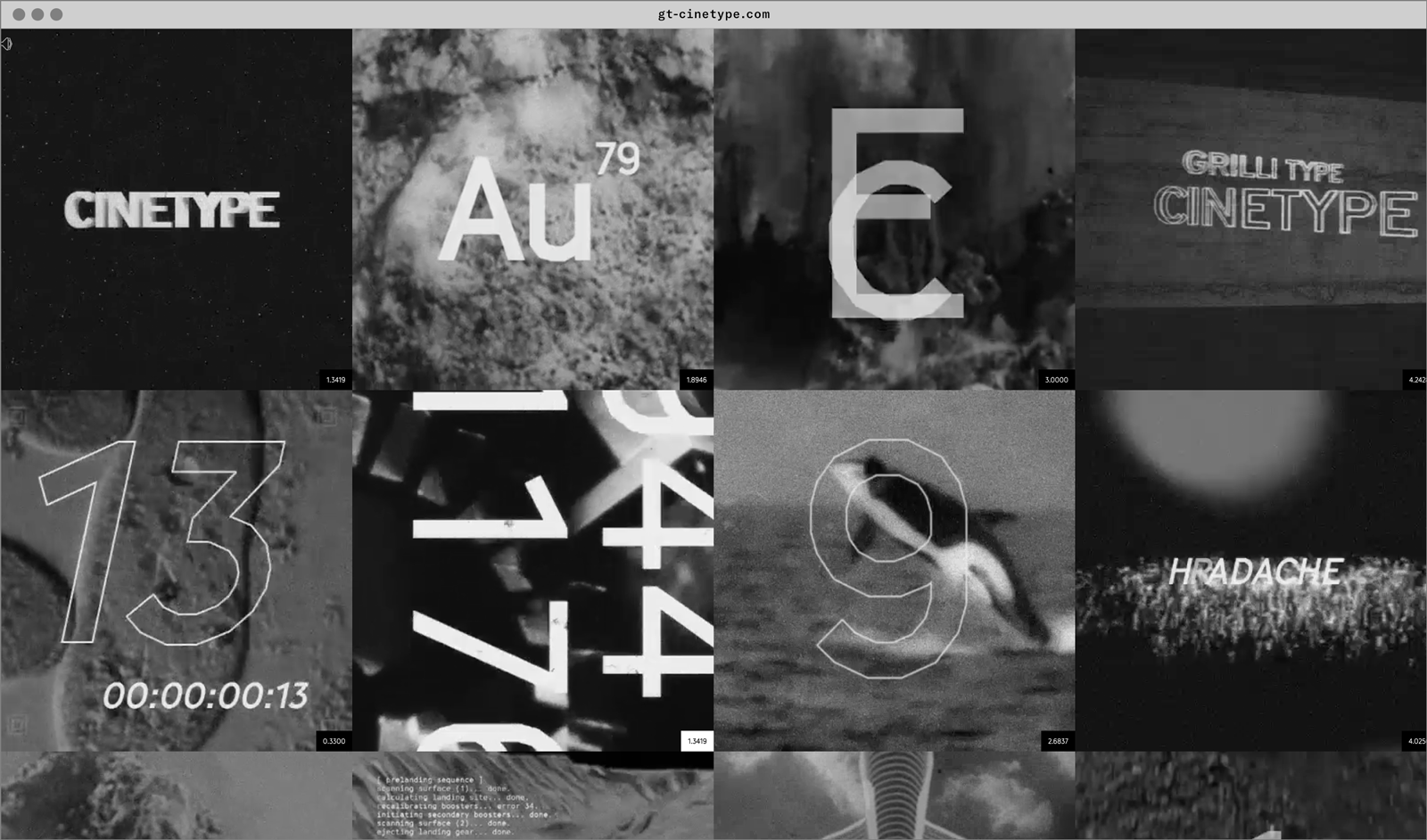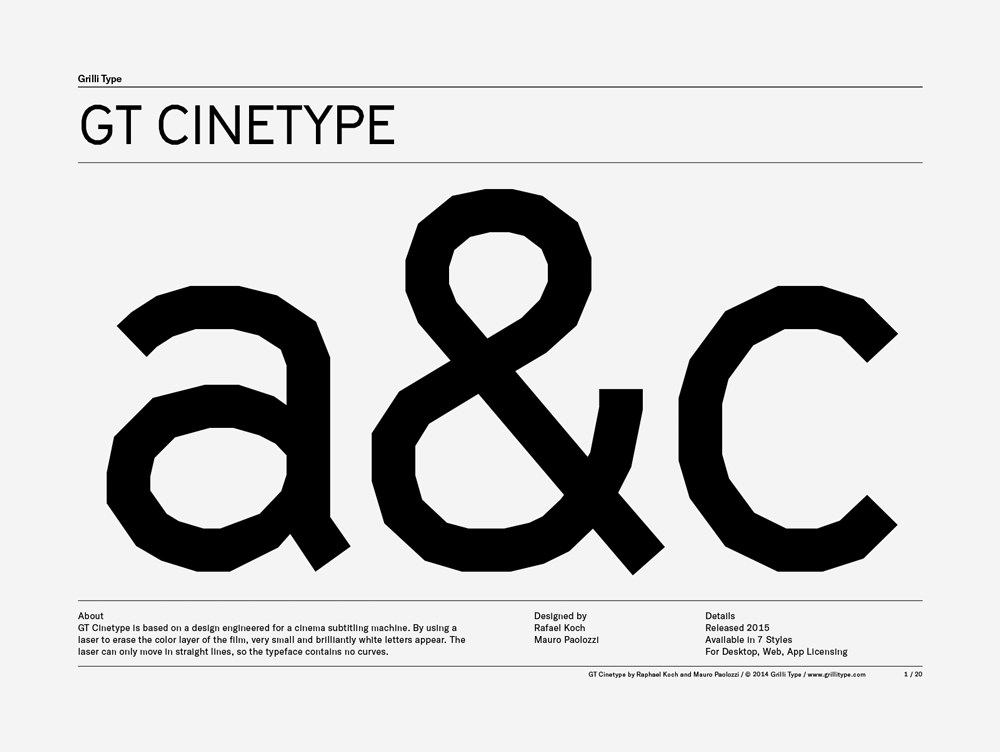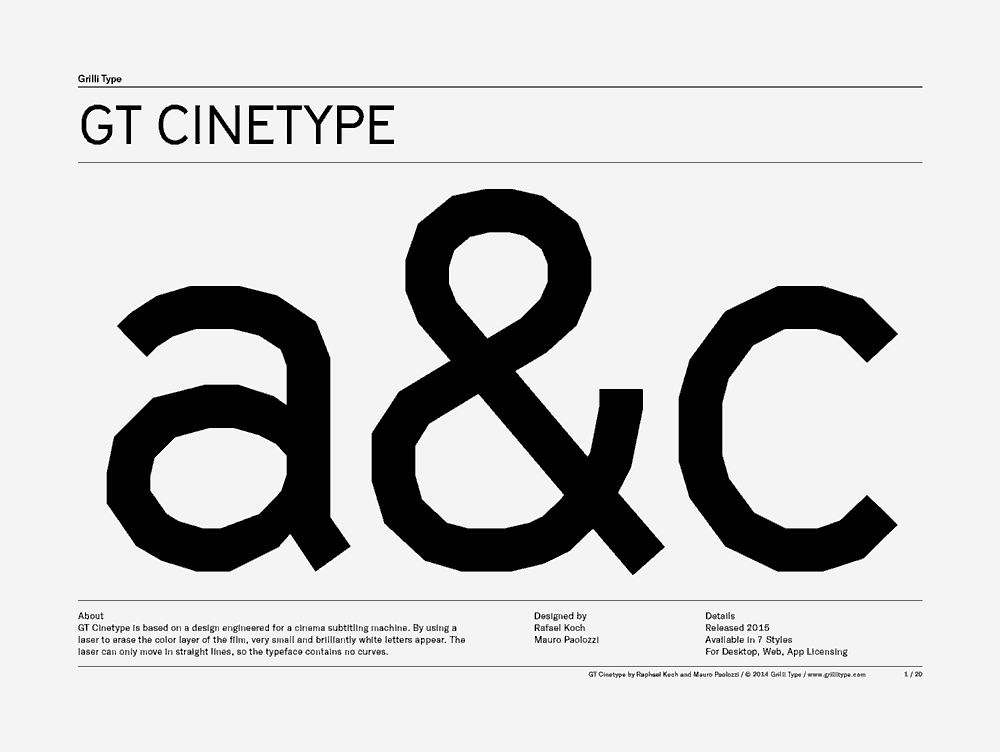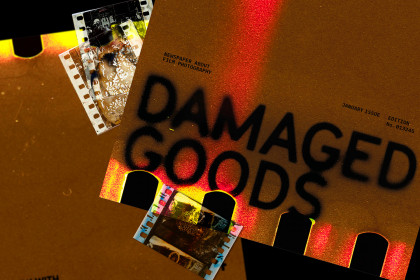GT Cinetype
Family overview
- Light Italic
- Regular Italic
- Bold Italic
- Mono
- LightInterstellar 2014 by Christopher Nolan with Matthew McConaughey, Anne Hathaway, Jessica Chastain
- Light ItalicC’era una volta il West 1968 by Sergio Leone with Henry Fonda, Charles Bronson, Claudia Cardinale
- RegularDonnie Darko 2001 by Richard Kelly with Jake Gyllenhaal, Jena Malone, Mary McDonnell
- Regular ItalicInterstellar 2014 by Christopher Nolan with Matthew McConaughey, Anne Hathaway, Jessica Chastain
- BoldThere Will Be Blood 2007 by Paul Thomas Anderson with Daniel Day-Lewis, Paul Dano, Ciarán Hinds
- Bold ItalicDonnie Darko 2001 by Richard Kelly with Jake Gyllenhaal, Jena Malone, Mary McDonnell
- MonoBasket Case 1982 by Frank Henenlotter with Kevin Van Hentenryck, Terri Susan Smith, Beverly Bonner
- Settings
Typeface information
GT Cinetype is based on a design engineered for a cinema subtitling machine. By using a laser to erase the color layer of the film, very small and brilliantly white letters appear. The laser can only move in straight lines, so the typeface contains no curves.
Typeface features
OpenType features enable smart typography. You can use these features in most Desktop applications, on the web, and in your mobile apps. Each typeface contains different features. Below are the most important features included in GT Cinetype’s fonts:
- CASE
- Case sensitive forms
(ROBOCOP)
- ONUM
- Oldstyle figures
10.03.1985
Typeface Minisite


- Visit the GT Cinetype minisite to discover more about the typeface family’s history and design concept.
GT Cinetype in use





